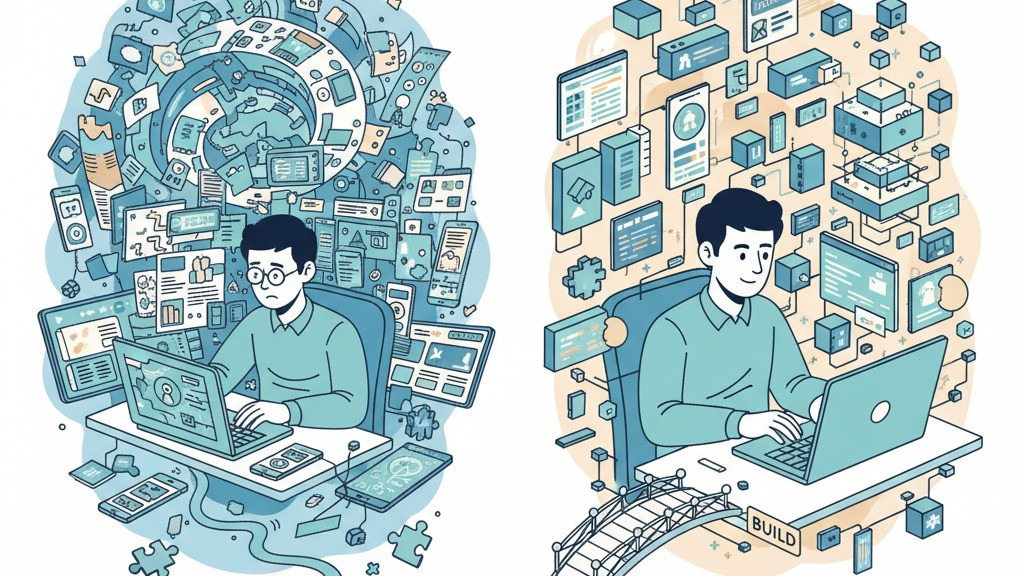Your AI Subscription is Your Personal Software Factory
I turned my $20 monthly AI subscription into a SaaS factory. Learn how this new mindset changes the game for Founder-Product Fit and building custom software.

An idea from a YouTube video sparked a weekend project. For months, I had been facing a modern dilemma: a growing list of podcasts to listen but no time to do so.
In the old days, I would've just accepted that I won't be able to keep up with it. However, now AI can actually do the listening for me and spit out the good stuff.
This is a perfect example of Founder-Product Fit, where personal experience with a problem is the driving force. Instead of downloading yet another app that might disappoint me, now I can just build what I actually want.
The whole thing felt less like coding and more like playing with really smart Lego blocks. When I hit a wall now, my brain doesn't jump to "what app can solve this?" but rather "how can I build this with what I already use?"
This has made the process of creation radically easier. I no longer have to wait for a commercial product built for the needs of an "average" user I've never met.
This makes it easy to shift from being a passive consumer of software to an active architect of my own digital tools. When you're your own user, I can keep tweaking little things until everything works exactly how I want.
But this new reality creates a interesting paradox. AI has removed the barrier to entry that once protected businesses.
Five years ago, a project such as this website, would have required significant investment and maybe weeks of development. Now I can do develop its core functionality in just a weekend with minimal expense.
My AI subscription is now a fee to use my personal software factory. It’s a platform that allows me to build my own custom tools that solves my own problems.
The same AI that empowered me also commoditizes any new software tool. As I was done with the project, I realised: anyone can now do this now.
With the technical moat gone for simple tools, the only advantage will be an obsessive connection to the problem. It is no longer about the ability to build, but about the story and the deep understanding behind what is being built.
AI gives everyone the same tools, but it can't replicate the frustration that come from living with a problem every day. The connection between you and the thing you're trying to fix is what will actually matter now.
This simplifies every decision. You end up building what's truly valuable because you're simply building a tool you wish you always had.